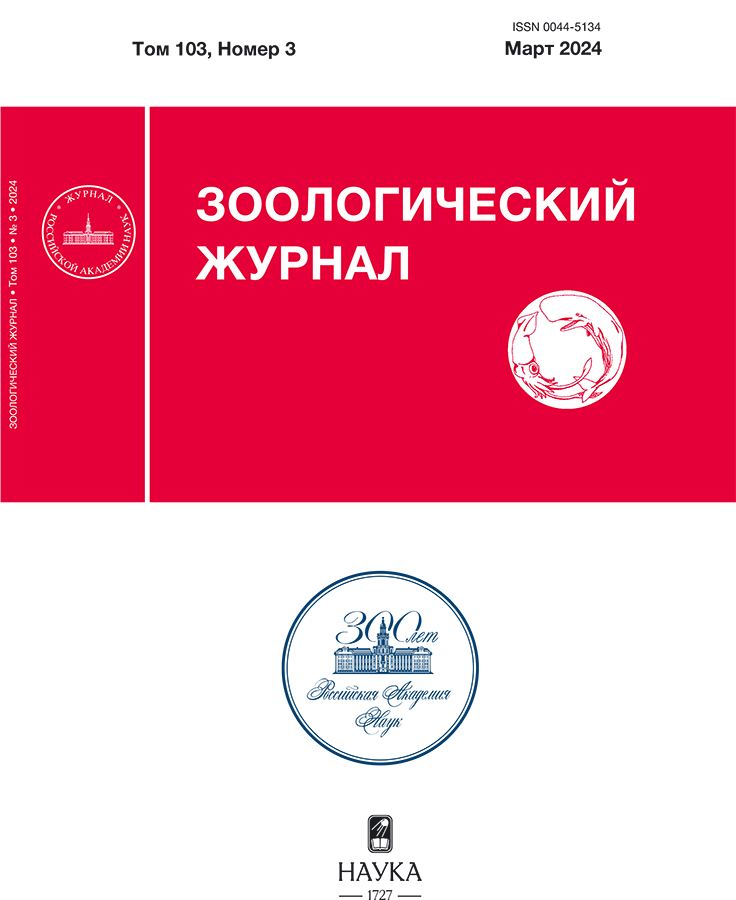Using unmanned aerial vehicles to count the numbers and monitor the condition of the Baikal seal (Pusa sibirica Gmelin 1788, Phocidae)
- Autores: Ilina P.O.1, Shibanova P.Y.1, Solovyeva M.A.1, Glazov D.M.1, Razuvaev A.E.2, Rozhnov V.V.1
-
Afiliações:
- A.N. Severtsov Institute of Ecology and Evolution, Russian Academy of Sciences
- “Zapovednoe Podlemorye” Federal State Establishment
- Edição: Volume 103, Nº 3 (2024)
- Páginas: 89-98
- Seção: ARTICLES
- URL: https://cijournal.ru/0044-5134/article/view/654309
- DOI: https://doi.org/10.31857/S0044513424030096
- EDN: https://elibrary.ru/VBWMZH
- ID: 654309
Citar
Texto integral
Resumo
To develop a method for monitoring the condition of Baikal seals (Pusa sibirica Gmelin 1788) and to count their numbers in summer haul-outs using an unmanned aerial vehicle (UAV) in July–August 2020 and 2021 on the islands of Tonkiy, Kruglyi and Dolgiy (the Ushkany Islands archipelago), visual surveys and surveys with UAVs were carried out. The maximum number of seals observed in 2020 was 3467, in 2021 it was less, 1295, and their total number in 2021 was also less than in 2020. During both years of observation, the number of seals in the haul-outs gradually decreased, which might have been due to the wave level on the lake. Contrary to the popular belief the largest seal haul-out being on the Tonkiy Island, the greatest number of seals was recorded on the Dolgiy and Kruglyi islands. Recommendations for the use of UAVs are given, these can also be useful in developing the rules for tourists visiting the national park.
Texto integral
Sobre autores
P. Ilina
A.N. Severtsov Institute of Ecology and Evolution, Russian Academy of Sciences
Email: solovjova.m@gmail.com
Rússia, Moscow, 119071
P. Shibanova
A.N. Severtsov Institute of Ecology and Evolution, Russian Academy of Sciences
Email: solovjova.m@gmail.com
Rússia, Moscow, 119071
M. Solovyeva
A.N. Severtsov Institute of Ecology and Evolution, Russian Academy of Sciences
Autor responsável pela correspondência
Email: solovjova.m@gmail.com
Rússia, Moscow, 119071
D. Glazov
A.N. Severtsov Institute of Ecology and Evolution, Russian Academy of Sciences
Email: solovjova.m@gmail.com
Rússia, Moscow, 119071
A. Razuvaev
“Zapovednoe Podlemorye” Federal State Establishment
Email: solovjova.m@gmail.com
Rússia, Ust-Barguzin, 671623
V. Rozhnov
A.N. Severtsov Institute of Ecology and Evolution, Russian Academy of Sciences
Email: solovjova.m@gmail.com
Rússia, Moscow, 119071
Bibliografia
- Агафонова Е.В., Веревкин М.В., Сагитов Р.А., Сипиля Т., Соколовская М.В., Шахназарова В.Ю., 2007. Кольчатая нерпа в Ладожском острове и на островах Валаамского архипелага. Санкт-Петербург: Изд-во Балтийского Фонда Природы. 61 с.
- Березовский А.Я., 2018. Географические названия озера Байкал и Околобайкалья: Топонимический словарь: Около 7000 географических названий. Красноярск: ИП Азарова Н.Н. 638 с.
- Иванов Т.М., 1938. Байкальская нерпа, ее биология и промысел // Известия Биолого-географического НИИ при Восточно-Сибирском государственном университете. Иркутск. Т. VIII. Вып. 1–2. С. 5–119.
- Иванов К.М., Купчинский А.Б., Овдин М.Е., Петров Е.А., Сыроватский А.А., Шабанов Д.Е., 2022. Опыт применения БПЛА в экологических исследованиях популяции байкальской нерпы (Pusa sibirica Gm.) в период начала формирования береговых лежбищ// Международный научно- исследовательский журнал. № 8 (122).
- Купчинский А.Б., Петров Е.А., Овдин М.Е., 2021. Первый опыт применения дистанционного мониторинга берегового лежбища байкальской нерпы (Pusa sibirica Gm.) // Биота и среда природных территорий. № 2. С. 77–94.
- Пастухов В.Д., 1993. Нерпа Байкала. Новосибирск: Наука. 271 с.
- Пастухов В.В., Фиалков В.А., 2011. Удаленный мониторинг в режиме реального времени на Ушканьих островах оз. Байкал как современный метод исследования байкальской нерпы (Phoca sibirica Gmelin) // Байкальский зоологический журнал. № 1. С. 5–9.
- Петров Е.А., 1997. Распределение байкальской нерпы Pusa sibirica // Зоологический журнал. Т. 76. № 10. С. 1202–1209.
- Петров Е.А., Купчинский А.Б., Фиалков В.А., Бадардинов А.А., 2021а. Значение береговых лежбищ в жизни байкальской нерпы (Pusa sibirica Gmelin 1788, Pinnipedia). 1. Обзор // Зоологический журнал. T. 100. № 6. С. 671–685.
- Петров Е.А., Купчинский А.Б., Фиалков В.А., Бадардинов А.А., 2021б. Значение береговых лежбищ в жизни байкальской нерпы (Pusa sibirica Gmelin 1788, Pinnipedia). 2. Поведение на лежбищах // Зоологический журнал. T. 100. № 5. С. 590– 600.
- Петров Е.А., Купчинский А.Б., Фиалков В.А., Бадардинов А.А., 2021в. Значение береговых лежбищ в жизни байкальской нерпы (Pusa sibirica Gmelin 1788, Pinnipedia). 3. Функционирование лежбищ байкальской нерпы на острове тонкий (Ушканьи острова, оз. Байкал) по материалам видеонаблюдений // Зоологический журнал. T. 100. № 7. С. 823–840.
- Петров Е.А., Купчинский А.Б., Сыроватский А. А., 2023. Ушканьи острова (озеро Байкал), их роль и значение в жизни байкальской нерпы (Pusa sibiri- ca Gmelin 1788, Pinnipedia) в современных условиях // Зоологический журнал. T. 102. № 12. С. 1421–1438.
- Соловьёва М.А., Пилипенко Г.Ю., Глазов Д.М., Петерфельд В.А., Петров Е.А., Рожнов В.В., 2020. Активность перемещений байкальской нерпы по данным спутникового мечения // Труды ВНИРО. Т. 181. С. 92–99.
- Фиалков В.А., Бадаринов А.А., Егранов В.В., Мельников Ю.И., 2014. Байкал в режиме реального времени: технические решения и научно-просветительские задачи // Развитие жизни в процессе абиотических изменений на Земле. Материалы III Всероссийской научно-практической конференции (23–30 сентября 2014 г., пос. Листвянка, Иркутская область). Иркутск: Изд-во Института географии имени В.Б. Сочавы СО РАН. С. 476–483.
- Hodgson A., Kelly N., Peel D., 2013. Unmanned aerial vehicles (UAVs) for surveying marine fauna: A dugong case study // PLoS ONE. Т. 8. № 11. e79556.
- Reder S., Lydersen C., Arnold W., Kovacs KM., 2003. Haulout behaviour of High Arctic harbour seals (Phoca vitulina vitulina) in Svalbard, Norway // Polar Biology. V. 27. P. 6–16.
- Schneider D.C., Payne P.M., 1983. Factors Affecting Haul-Out of Harbor Seals at a Site in Southeastern Massachusetts // J. Mammalogy. V. 64 (3). P. 518–520.
- Sweeney K.L., Helker V.T., Perryman W.L., LeRoi D.J., Fritz L.W., Gelatt T.S., Angliss R.P., 2016. Flying beneath the clouds at the edge of the world: using a hexacopter to supplement abundance surveys of Steller sea lions (Eumetopias jubatus) in Alaska // J. Unmanned Veh. Syst. V. 4. P. 1–12.
Arquivos suplementares















